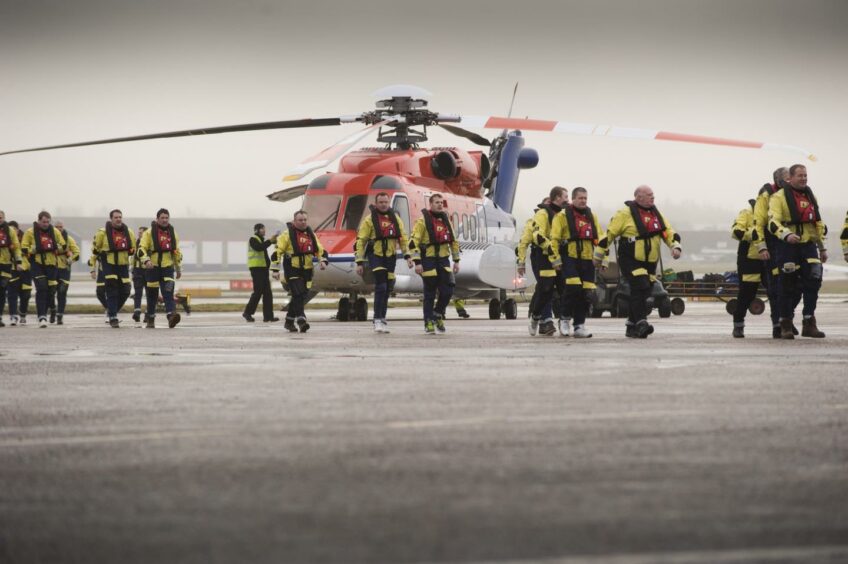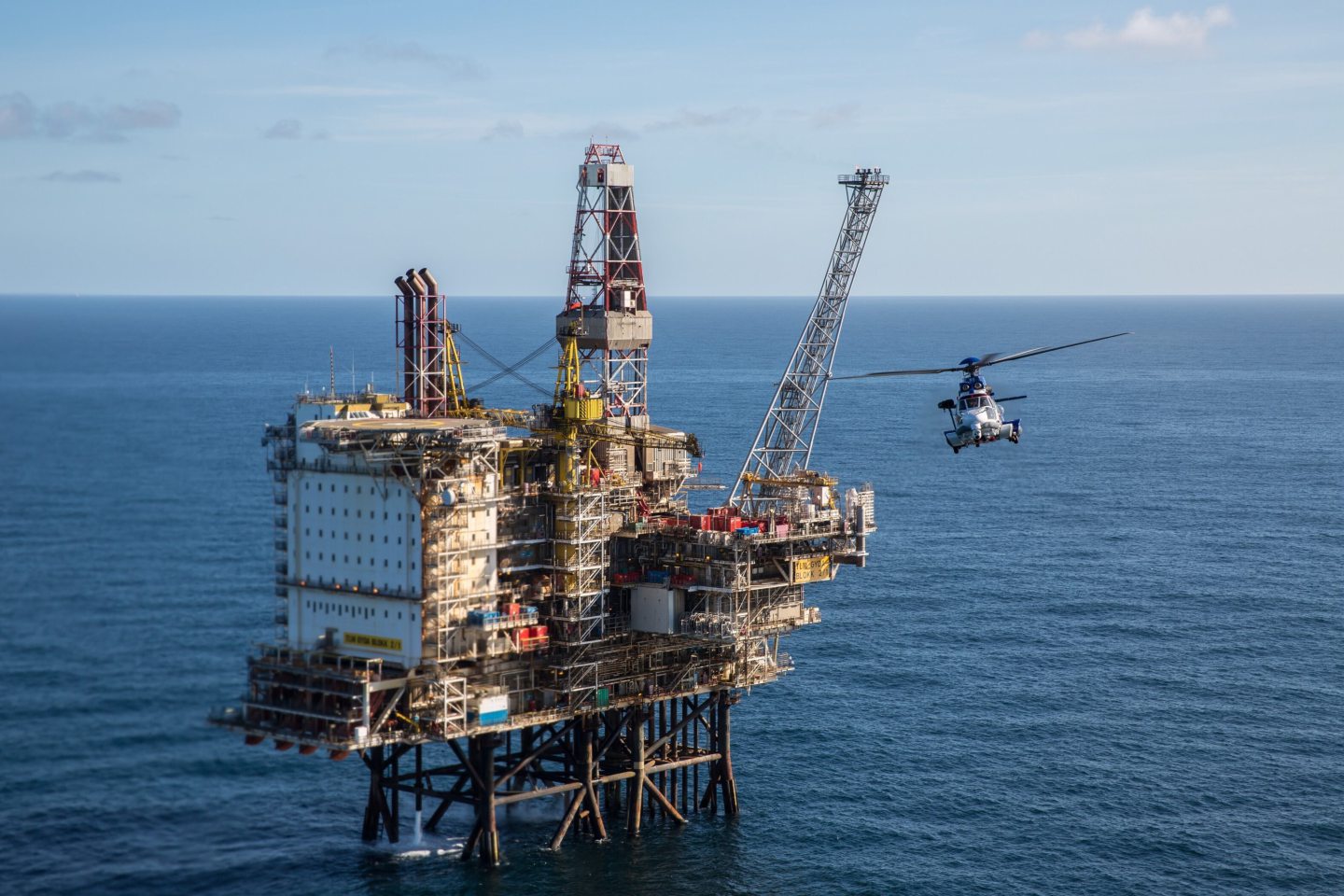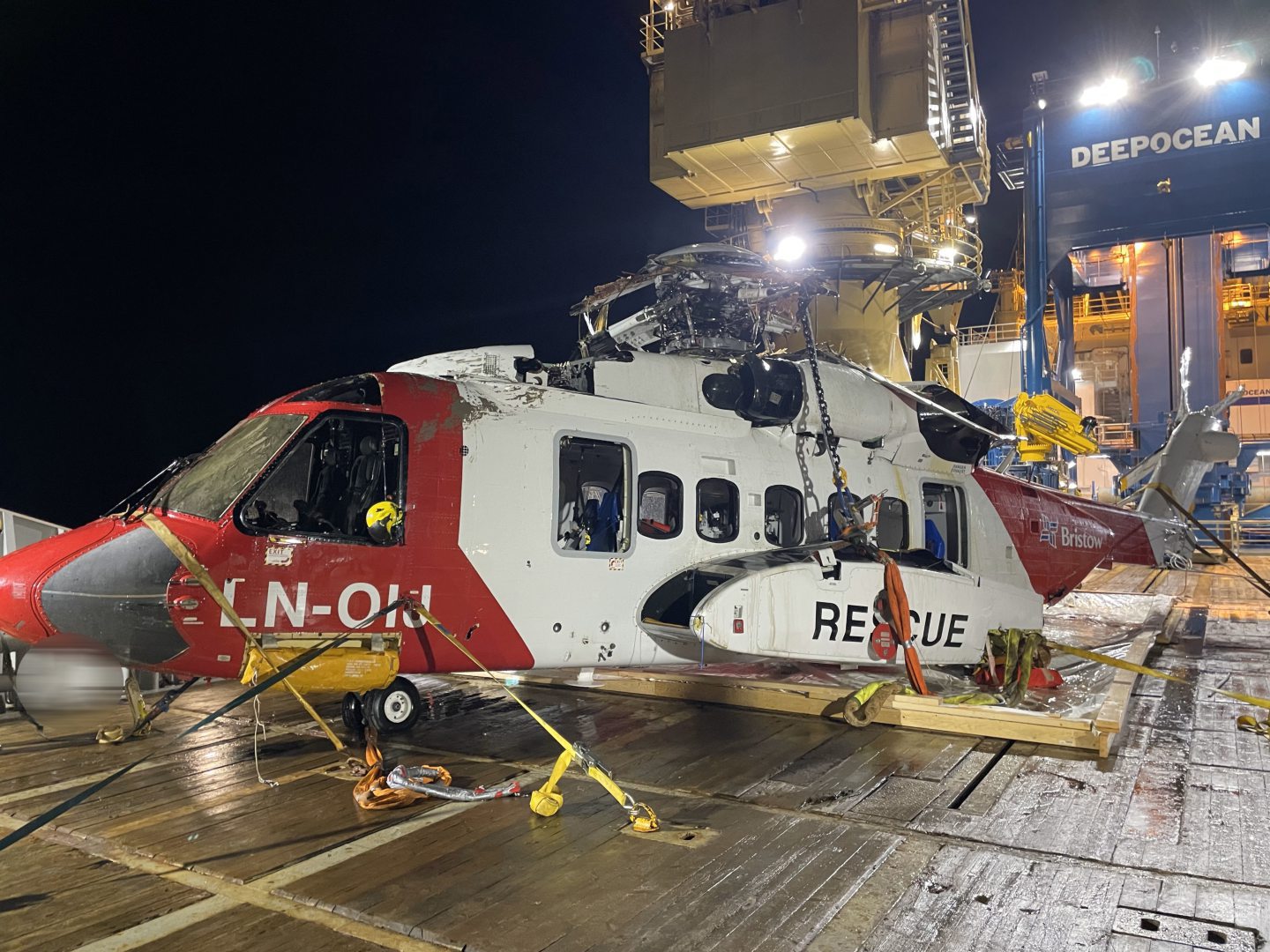
A union survey of offshore oil and gas workers has highlighted concerns about the safety of North Sea helicopter flights.
Unite the Union surveyed 1,200 offshore oil and gas workers on helicopter safety, following a fatal crash in Norway involving a Sikorsky S-92 earlier this year.
The S-92 is the primary helicopter used across the UK and Norway, and the survey highlighted concerns about its safety in the wake of the crash which killed an Equinor employee in February.
The survey also highlighted concerns about the safety impact of supply chain issues in recent months affecting the availability of spare parts for the S-92.
In addition, 75% of offshore workers are opposed to the reintroduction of the Airbus Super Puma model to the North Sea, according to the survey.
Offshore helicopter operators withdrew the Super Puma from the oil and gas sector in 2016 following a series of fatal crashes.
However, earlier this year Airbus executives hinted at the possible return of the Super Puma to offshore operations, sparking a backlash from offshore unions.
Unite general secretary Sharon Graham said the union wants to ensure the full confidence of offshore workers in the helicopters used to transport them.
“Overwhelmingly offshore workers are telling Unite that more action and assurances are needed from the industry in order to improve the safety of helicopter flights. Operators and contractors must listen to these concerns and act,” Ms Graham said.
Super Puma and S-92 helicopters
According to the Unite survey, offshore workers are strongly opposed to the prospect of the Super Puma returning to North Sea flights.
Around 75% of respondents said they “would never fly again” in the Super Puma, while 18% said they would need to be convinced safety concerns were fully addressed before considering it.
As for the S-92, around 43% of respondents expressed concerns about supply chain issues impacting helicopter safety. However, if these issues were resolved it would “allay” fears, according to the survey.
Just over a third of respondents (36%) said they had confidence in the S-92.
Meanwhile around 17% said safety concerns, including the recent crash in Norway, had “really shaken” confidence in the S-92.
In response to the survey, a spokesperson for Sikorsky said: “The S-92 helicopter is the industry’s recognized standard for safety and reliability.
“We continue to support and see improvement in the supply chain and are working tirelessly to serve the S-92 operating community.”
Energy Voice has contacted Airbus for comment.
North Sea offshore helicopter safety concerns
On general helicopter safety issues, 35% said the S-92 is reliable but supply chain issues need to be resolved, while 34% said the oil and gas sector is “too reliant” on a small number of helicopter models.
Around 19% of respondents called for greater workforce participation in the design and procurement of helicopters to address safety concerns.
Unite said the 1,200 respondents to the survey came from a range of roles, including operators, drillers, maintenance workers, caterers and cleaners.
The union said it received responses from employees at several major North Sea operators and contractors, including Altrad, Odfjell, Petrofac, Repsol, Stork and Wood.
Unite declined to provide a full breakdown of responses to all survey questions.
Unite lead officer in the offshore sector John Boland said the industry “must take note of what offshore workers are saying” and work with the union to resolve safety concerns.
“Offshore workers have clearly spoken about their horror over the Super Puma model ever being reintroduced and have also expressed their concerns about supply chain issues impacting on the safety of the Sikorsky S-92 helicopter,” he said.
Offshore unions in Norway have also raised concerns about North Sea helicopter safety following the fatal crash near Bergen, amid longstanding calls for new aircraft models to take pressure off the S-92.
Recommended for you


 © Image: Lorette Fabre/Airbus
© Image: Lorette Fabre/Airbus © Supplied by Norwegian Safety Inv
© Supplied by Norwegian Safety Inv